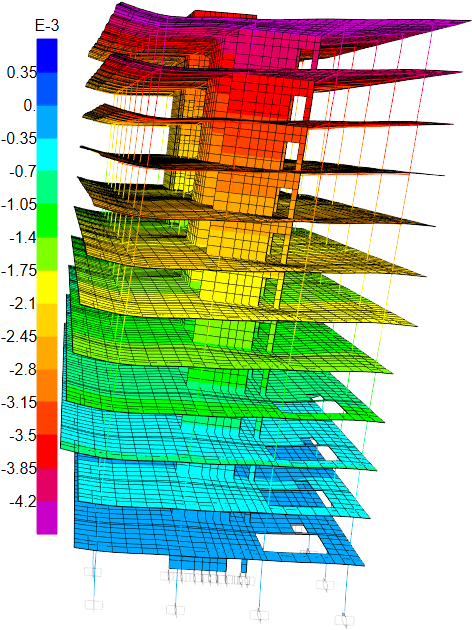Structural Analysis

Introduction to Structural Analysis
Structural Analysis is a vital component of the structural design process. It involves the examination and calculation of the behavior and performance of structures under various loads and conditions. By using mathematical models and engineering principles, structural engineers can ensure that buildings, bridges, and other structures can withstand their intended use and remain safe and reliable.
Question 1: What is the purpose of Structural Analysis?
a) To create architectural designs
b) To examine structural behavior and performance
c) To calculate construction costs
Answer: b) To examine structural behavior and performance
Types of Structural Analysis
Structural Analysis includes various methods to study different aspects of structural behavior:
- Static Analysis: Evaluating structural response under constant or slowly changing loads.
- Dynamic Analysis: Studying the behavior of structures subjected to dynamic forces, such as earthquakes or wind loads.
- Modal Analysis: Determining the natural frequencies and mode shapes of a structure.
- Finite Element Analysis (FEA): Numerical method for analyzing complex structures using finite elements.
Question 2: Which method determines the natural frequencies of a structure?
a) Static Analysis
b) Dynamic Analysis
c) Modal Analysis
Answer: c) Modal Analysis
Load Types in Structural Analysis
Structural engineers consider various load types when analyzing a structure:
- Dead Load: The permanent weight of the structure and its components.
- Live Load: The variable load imposed by the intended use and occupants of the structure.
- Wind Load: The force exerted by wind on the structure.
- Seismic Load: The ground motion effect during an earthquake.
Question 3: Which load type is caused by the ground motion during an earthquake?
a) Dead Load
b) Wind Load
c) Seismic Load
Answer: c) Seismic Load
Structural Analysis Tools
Several tools and software are used in structural analysis to perform complex calculations and simulations:
- Computer-Aided Design (CAD): Software for creating 2D and 3D models of structures.
- Structural Analysis Software: Specialized tools for analyzing and simulating structural behavior.
- Building Information Modeling (BIM): Integrated 3D models that include structural analysis data.
Question 4: What is the function of Structural Analysis Software?
a) Creating architectural designs
b) Simulating structural behavior
c) Generating construction drawings
Answer: b) Simulating structural behavior
Importance of Structural Analysis
Structural Analysis is essential for several reasons:
- Safety: Ensuring that structures can withstand their design loads and remain safe for occupants.
- Cost-Effectiveness: Optimizing material usage and design to reduce construction costs.
- Performance: Understanding how a structure will behave under different conditions and loads.
- Innovation: Allowing engineers to explore new and innovative designs with confidence.
Question 5: Why is Structural Analysis crucial in the design process?
a) To increase construction costs
b) To improve structural safety
c) To minimize design options
Answer: b) To improve structural safety
Conclusion
Structural Analysis is a fundamental aspect of structural design, ensuring that buildings and other structures meet safety standards and perform as intended. By utilizing various analysis methods and software tools, structural engineers can create innovative and reliable structures that contribute to the safety and well-being of society.
Case Studies
Well Done !